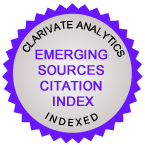The Knowledge Management Concept for Contemporary Organizations
Abstract
The article discusses the role of knowledge in developing of successful organizations and depicts the essence of the new type of management activity, i. e. knowledge management. Specifics of intangible assets are defined here both as objects and resources of management. The author discusses their classification and also gives recommendations as to execution of management functions and accumulation and sharing of knowledge. Large space is contributed to realignment of organizations, to forming of leaders and structures oriented at creation of new values using methods of knowledge management. The author effectuates a conclusion concerning prospects for learning and intellectual organizations.
Downloads
References
REFERENCES IN LATIN ALPHABET
Downloads
Published
How to Cite
Issue
Section
License
Articles of the Russian Management Journal are open access distributed under the terms of the License Agreement with Saint Petersburg State University, which permits to the authors unrestricted distribution and self-archiving free of charge.





